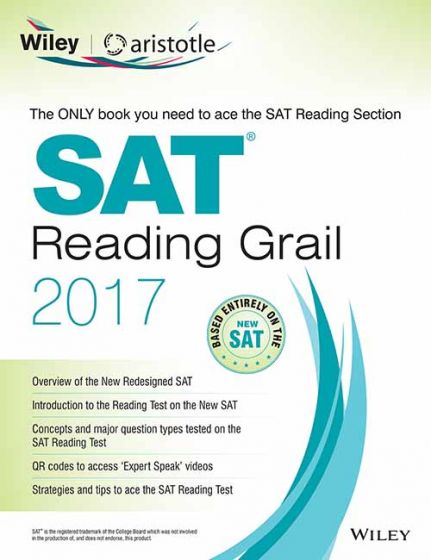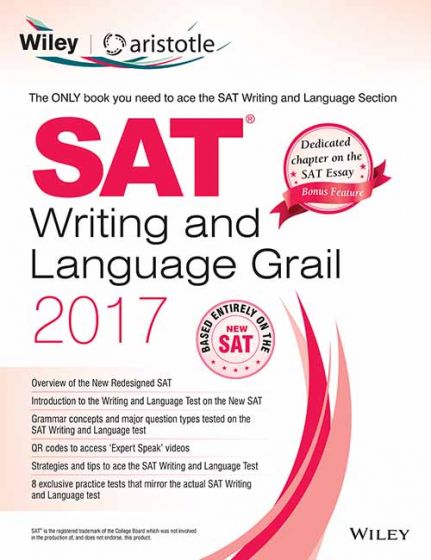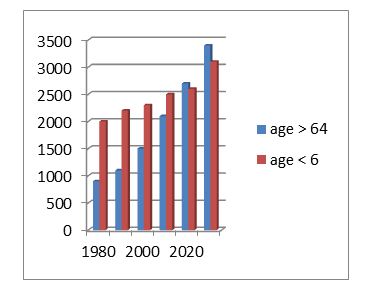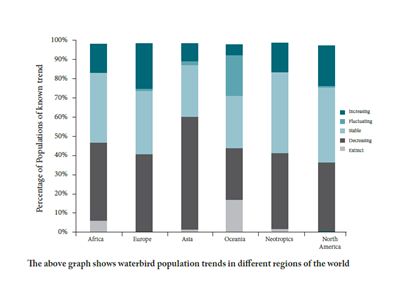SAT Writing and Language Test
1. Grammar Question 1: Which among the given options do you think would best replace the underlined part in the following paragraph?
He and his colleagues examined fossils from prototurtles, focusing on an ancient South African reptile called Eunotosaurus africanus. Eunotosaurus shares many characteristics with animals that dig and burrow the researchers found. The reptile had huge claws and large
triceps in addition to thickened ribs.
A. No Change
B. Shared many characteristics with digging and burrowing animals
C. Shared many characteristics with animals that dig and burrow,
D. Shares many characteristics with animals digging and burrowing
Answer: C
Explanation: Since the previous sentence is in the past tense, we need to go with the past tense verb shared. This brings us down to options B and C. The phrase ‘digging and burrowing animals’ is very awkward, making C the correct answer.
2. Grammar Question 2: Which among the given options do you think would best replace the underlined part in the following paragraph?
Turtle shells didn’t get their start as natural armor, it seems. The reptiles ancestors might have evolved partial shells to help them burrow instead , new research suggests.
A. No Change
B. Reptiles ancestors’
C. Reptiles’ ancestors
D. Reptiles ancetor’s
Answer: C
Explanation: We need the possessive reptiles’ in this sentence to modify ancestors. The ancestors don’t need to be in the possessive form since they are not modifying anything. Thus, C is the correct answer.
3. Word-Usage Question 1: Which among the given options do you think would best replace the underlined part in the following paragraph?
Kevin spent hours poring over his books and practicing questions so that he could ace his college exams. However, he was one of the top three students in the class when the final results were declared.
A. No Change
B. Since,
C. Surprisingly,
D. As a result,
Answer: D
Explanation: There is a direct causality between the two sentences. Since Kevin spent a lot of time studying, he managed to rank among the top three students. As a result brings out this causality, making D the correct answer.
4. Word-Usage Question 2: Which among the given options do you think would best replace the underlined part in the following paragraph?
Debates continue to whether individual life spans and the problems associated with aging are programmed into our bodies, like ticking time bombs we carry from birth.
A. No Change
B. about
C. in
D. for
Answer: B
Explanation: The correct idiomatic expression is ‘debate about something’, making B the correct answer.
5. Word-Usage Question 3: Which of the following three sentences is correct?
i. Usain Bolt is considered as a great athlete.
ii. Usain Bolt is considered to be a great athlete.
iii. Usain Bolt is considered a great athlete.
A. i
B. ii
C. iii
D. None of the options is correct
Answer: C
Explanation: If you chose either A or B then you were ‘listening to your ear’. In other words, you made a choice based on what sounded correct to you. Don’t fall in this trap on the SAT! The correct idiomatic expression in this case in C.
6. Passage Structure Based Question:
Read the following paragraph: Turtles, though, form shells by gradually broadening their ribs until the bones fuse together. Fossils from ancient reptiles with partial shells made from thickened ribs suggest that turtles’ ancestors had a diet high in calcium. The author wants to convey the idea that the ancestors of turtles also used to develop their shells in a similar manner.
Which option do you think does this best?
A. Turtles’ ancestors managed to survive the mass extinction using their shells as protection
B. Turtles’ ancestors began to suit up in the same way.
C. Turtles’ ancestors had a unique mechanism for developing their shells that has been modified considerably through evolution
D. These could have been the ancestors of modern turtles
Answer: B
Explanation: The best way to answer these questions is to go through each option and check whether it answers the questions asked. Note that these questions usually do not have a “No change” option, so you
will have to go through four options and not three. Option A talks about how the ancestors survived the mass extinction but that is not our concern. Option C does the opposite of what the question requires by suggesting that the mechanism by which turtles develop their shells has changed in modern times. Option D can be eliminated because the passage never doubts that these are the ancestors of modern turtles. Only Option B suggests that the turtles’ ancestors may have developed their shells in the same manner as D, modern turtles, making B the correct answer.
7. Graph Interpretation Question 1: Read the following passage and analyze the graph that follows:
The issue is an urgent one. The globe’s population has never been older. According to the U.S. Census Bureau’s 2015 An Aging World report, by 2020 the number of old people will outnumber the number of children. Seniors will make up 22.1 percent of the U.S. population in 2050, and nearly 17 percent globally (a whopping 1.6 billion people), the demographers predict.
The below graph provides past and future projected populations of two age groups of people:
The author wishes to modify this sentence to make it more specific using information from the graph. Which option does this best?
A. No Change
B. Longer lifespans and reduced infant mortality will lead to a rapid growth in the population of the world
C. The number of old people will increase drastically due to advances in technology
D. The number of people aged 65 and older worldwide will outnumber children aged 5 and younger for the first time in history
Answer: D
Explanation: Option D is the best answer as it conveys the intended meaning by using specific numbers from the graph. The other options do not provide any specific numbers from the graph.
SAT Reading Test
Read the following passage to answer the questions that follow:
The masked finfoot Heliopais personata is a rare waterbird with a peculiar appearance. It is the only member of the family Heliornithidae in Asia, and the only member of its genus. This species is patchily distributed within a range
5 extending from northern India to Vietnam, and southwards to Peninsular Malaysia and Indonesia. The global population of this bird is considered in steep decline. Enigmatic, both historically and recently, little is known of the ecology, distribution or numbers of masked finfoots
10 throughout most of their range. The species has been found principally along rivers in lowland forest, mangroves, freshwater swamp forest, and occasionally in lakes, marshes and forest pools, but survey effort between habitats is uneven and real habitat use remains unclear. It appears to favour
15 wetlands with emergent or dense bankside woody vegetation in areas with low levels of human activity, although there are also a number of records from heavily populated areas such as park ponds, ornamental lakes and reservoirs in Peninsular Malaysia and Singapore.
20 The ecology and distribution of the masked finfoot are so poorly known that threats are generally inferred rather than directly observed. Habitat destruction and degradation caused by reclamation of mangroves, riverside agriculture and logging in lowland riverine forest in Asia suggest a very
25 rapidly declining population. While no empirical estimates exist for the current rate of decline, as a species reliant on undisturbed wetlands, habitat loss and hunting undoubtedly drove a major decline of the masked finfoot in the latter half of the twentieth century in Southeast Asia.
8. Global Question:
What is the primary purpose of the author in writing the passage?
(A) To suggest that conservation efforts be taken to prevent the decline in the numbers of a particular waterbird
(B) To explain the reasons for the decline in the numbers of a particular waterbird
(C) To criticize the actions of hunters for the decline in the numbers of a particular waterbird
(D) To discuss a particular waterbird with reference to its distribution and habitat and its falling numbers
Answer: D
Explanation: We know that the author has a neutral agenda in the passage. Thus, options that start with words such as suggest and criticize can immediately be eliminated. This brings us down to options B and D. While the author does mention B in passing in the last paragraph, D encompasses the entire passage and, hence, is the best answer.
9. Detail Question 1:
According to the passage, why are threats to the masked finfoot usually inferred rather than observed?
(A) Because the masked finfoot is active only at night making it difficult to study it
(B) Because very little information is available about the masked finfoot
(C) Because the masked finfoot is found in areas that are not inhabited by humans
(D) Because the ecology and the distribution of the masked finfoot are not well known
Answer: D
Explanation: The answer to this question can be found in the opening sentence of the last paragraph of the passage (Lines 20-22) - The ecology and distribution of the masked finfoot are so poorly known that threats are generally inferred rather than directly observed. Thus, D is the correct answer to this question.
10. Detail Question 2:
Which choice provides the best evidence for the answer to the previous question?
(A) Lines 8-10 (“Enigmatic.........range”)
(B) Lines 1-2 (“The.......appearance”)
(C) Lines 20-22 (“The.............observed”)
(D) Lines 25-29 (“While............Asia”)
Answer: C
Explanation: The answer to this question can be found in the opening sentence of the last paragraph of the passage (Lines 20-22) - The ecology and distribution of the masked finfoot are so poorly known that threats are generally inferred rather than directly observed. Hence, C is the correct answer to this question.
11. Inference Question:
Which of the following assertions is best supported by the information in the passage?
(A) If the decline in the numbers of the masked finfoot is not stopped soon, the bird will become extinct.
(B) No threat to the masked finfoot has ever been observed.
(C) The elusive nature of the masked finfoot is not a recent phenomenon.
(D) The masked finfoot is found across the globe, but in different numbers.
Answer: C
Explanation: Options A and B are classic examples of extreme options. Nothing in the passage suggests that the masked finfoot will become extinct; also the passage states that threats are ‘generally’ not directly observed, not that they are ‘always’ not directly observed. D is never stated in the passage. The correct answer is C because the opening lines of the 2nd paragraph state that this has been the case ‘historically’ and recently.
12. Function Question:
The author mentions the lack of “empirical estimates” in Line 25 in order to
(A) Highlight the need for protecting the finfoot
(B) Provide a qualifier for his conclusions about the rate of decline of the finfoot population
(C) Suggest that more research needs to be conducted into the finfoot in order to successfully conserve its remaining population
(D) Provide reasons for the decline in the finfoot population
Answer: B
Explanation: The author mentions at several places in the passage that very little information is available about the finfoot and its behaviour. Yet the author makes definitive conclusions about the rate of decline in the finfoot’s numbers in Lines 24-25. This could bring up the question that how is the author so sure of these facts? The author is pre-empting such a question and providing a qualifier in the passage by himself stating that there is no empirical evidence available for the current rate of decline of the finfoot population. Thus, B should be the correct answer. (In case you are still confused, a qualifier also means a limiting factor or a constraint).
13. Vocabulary-in-Context Question:
As used in Line 1 of the passage, “peculiar” most nearly means
(A) Weird
(B) Strange
(C) Unusual
(D) Beautiful
Answer: C
Explanation: In normal usage, we would use peculiar to denote something strange. However, in the passage, there is nothing to suggest that there is anything weird or strange (or even beautiful) about the bird. The word ‘peculiar’ is used in the passage while describing the bird’s different appearance, so the best prediction for the meaning of the word should be that the bird has a unique or unusual appearance. Thus, C should be the correct answer.
14. Graph Interpretation Question 2:
The information in the graph best supports the assertion about waterbirds in the given period that
(A) The maximum number of waterbird extinctions has taken place in Africa
(B) The lowest increase in the waterbird population has taken place in Asia
(C) A higher percentage of waterbird population is stable in Oceania than in Neotropics
(D) The highest decrease in the waterbird population has taken place in Asia
Answer: D
Explanation: While answering Graph interpretation questions, it’s best to go through each option and eliminate. Option A is incorrect because the graph clearly shows that the maximum number of waterbird extinctions has taken place in Oceania. Option B is incorrect because the lowest increase in the waterbird population has actually taken place in Oceania again. Option C is incorrect because the graph clearly shows that a lower percentage of waterbird population is stable in Oceania than in Neotropics. Finally, Option D is the correct answer because the blue color denotes decreasing waterbird population and the blue line is the highest for Asia. Thus, it can be inferred that the highest decrease in the waterbird population has taken place in Asia.
15. New-SAT Awareness Question:
Which one of the following statements is incorrect with respect to the New SAT?
(A) No penalty for guessing
(B) Three sections: Math, Reading, and Writing and Language
(C) Five answer choices
(D) Optional essay
Answer: C
Explanation: Unlike the pre-March 2016 SAT that had five answer choices for each question, the New SAT has reduced the number of answer choices to FOUR. So, that’s one less thing to worry!






